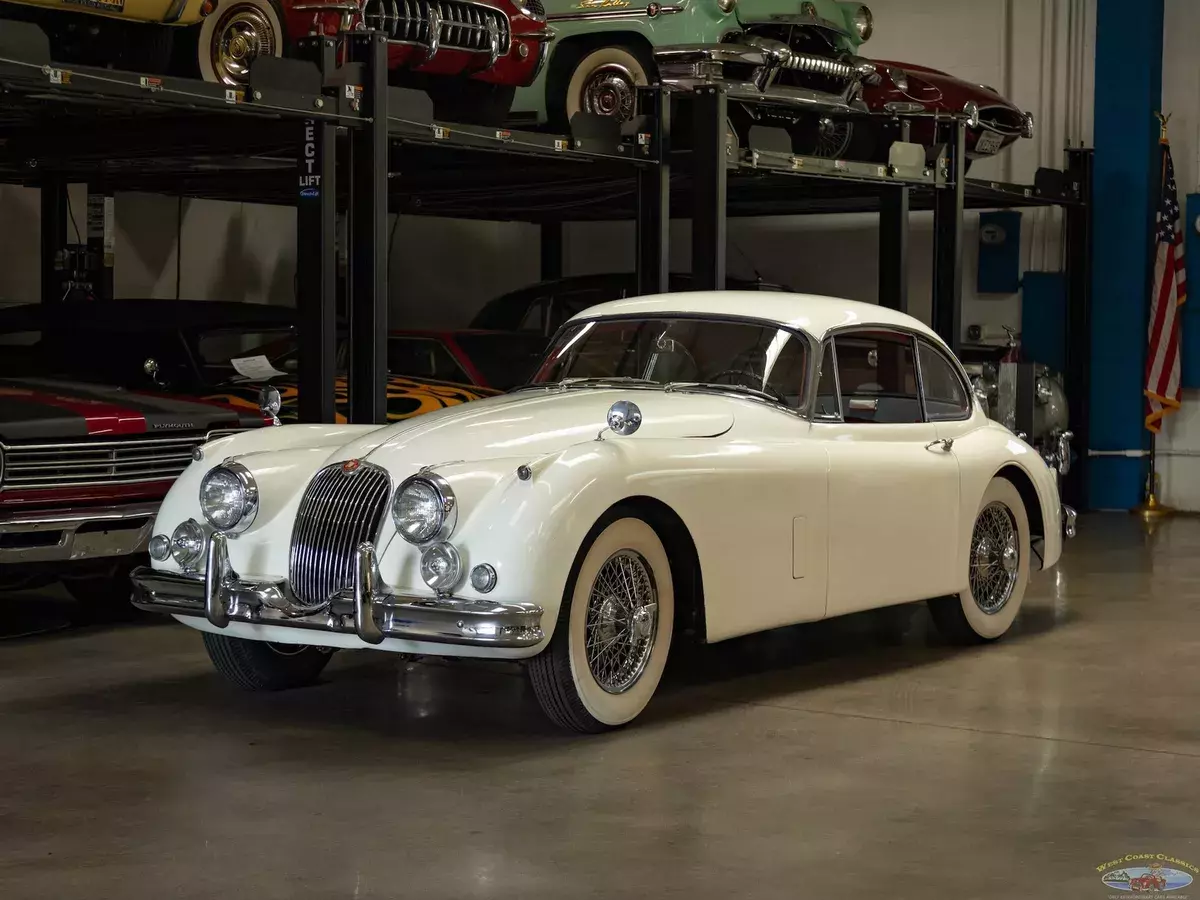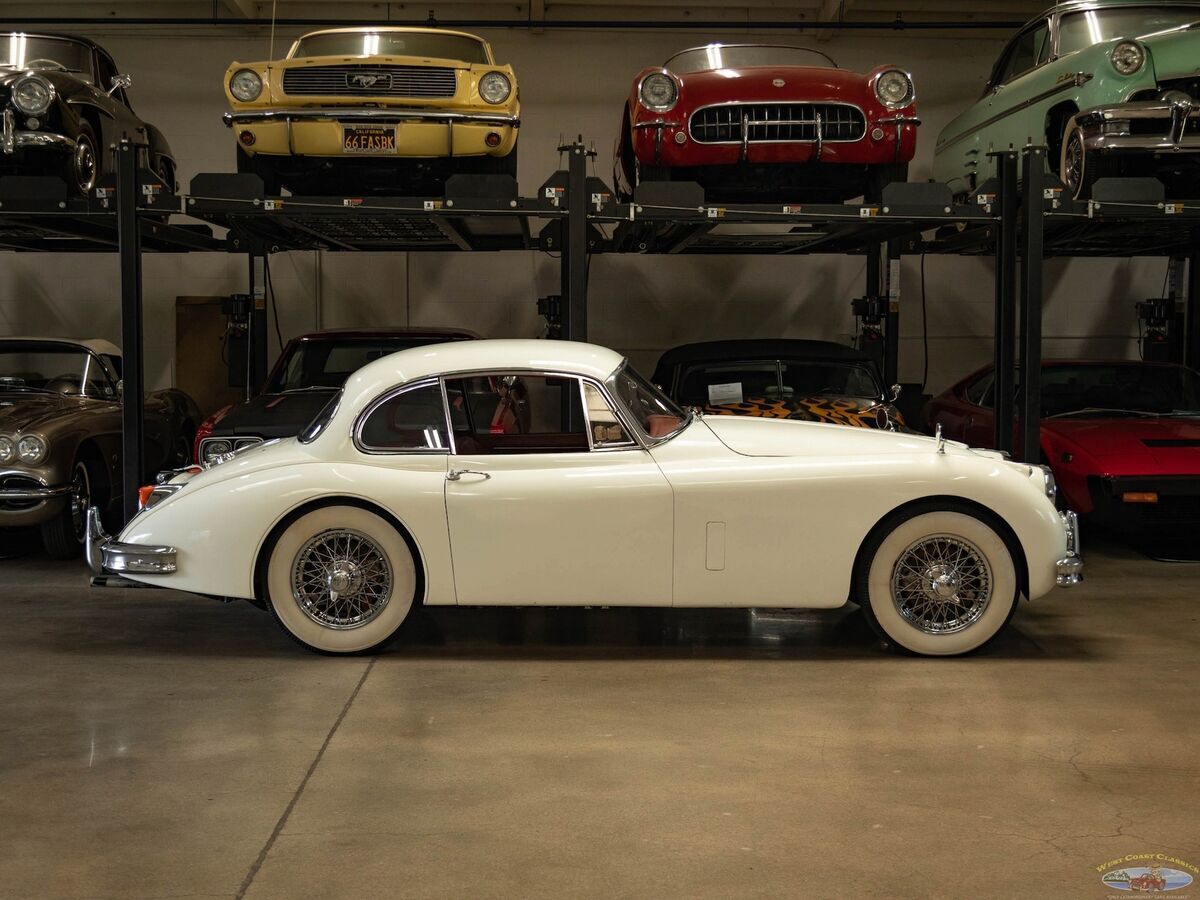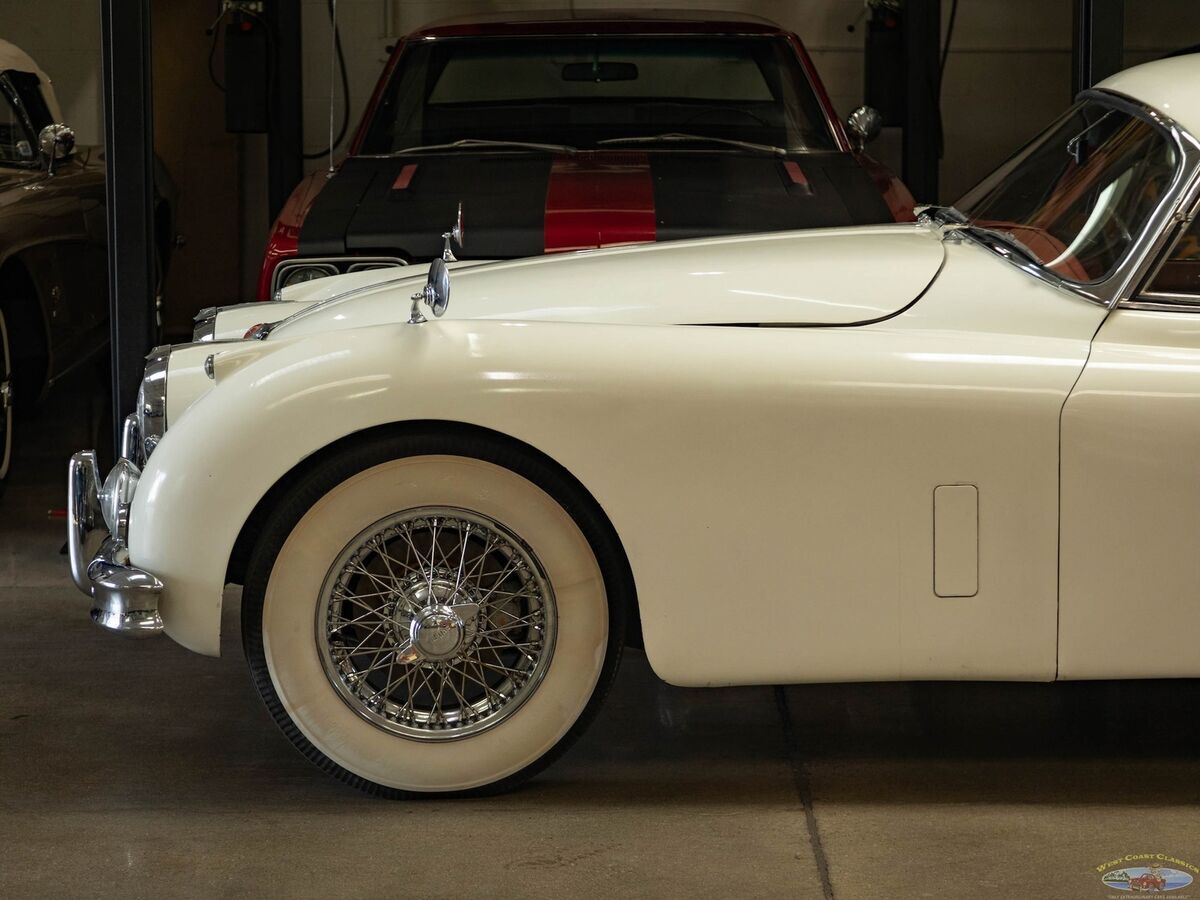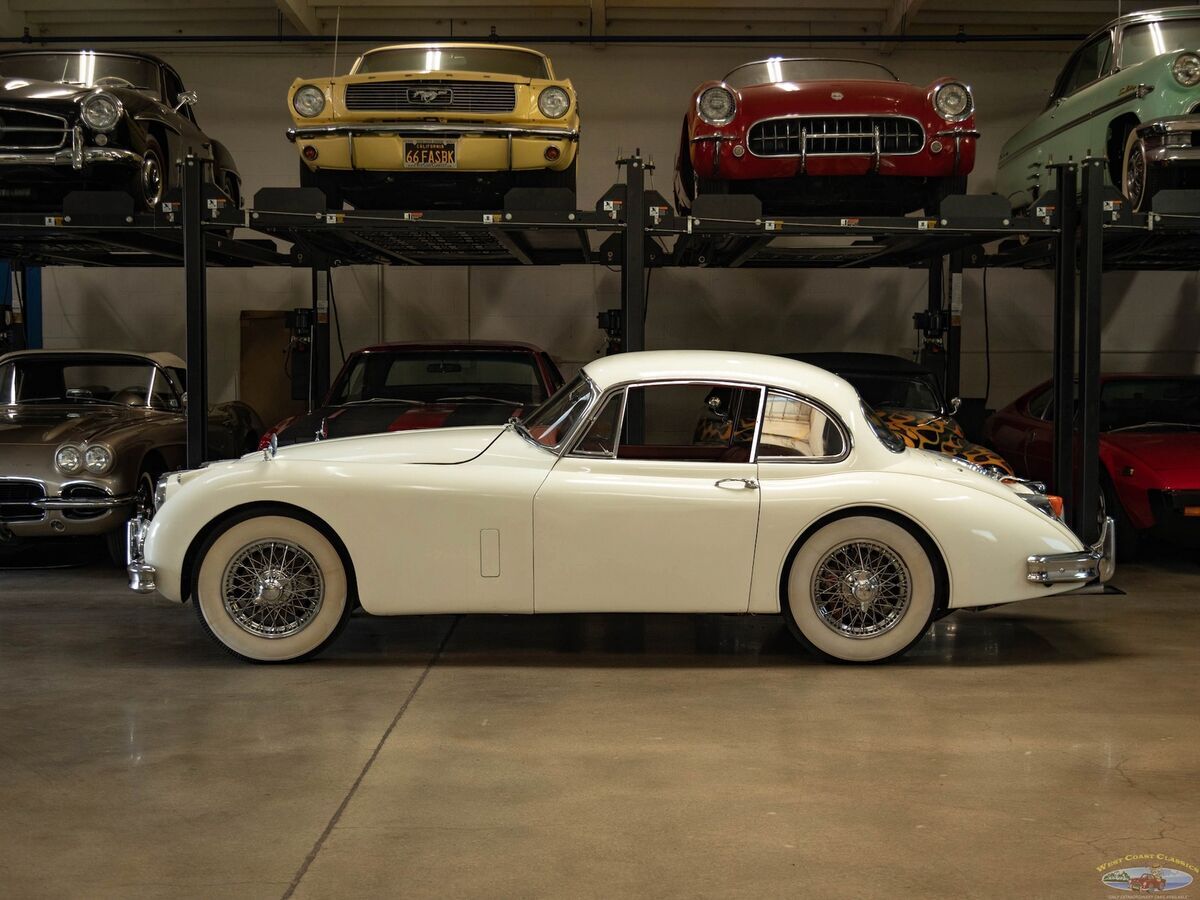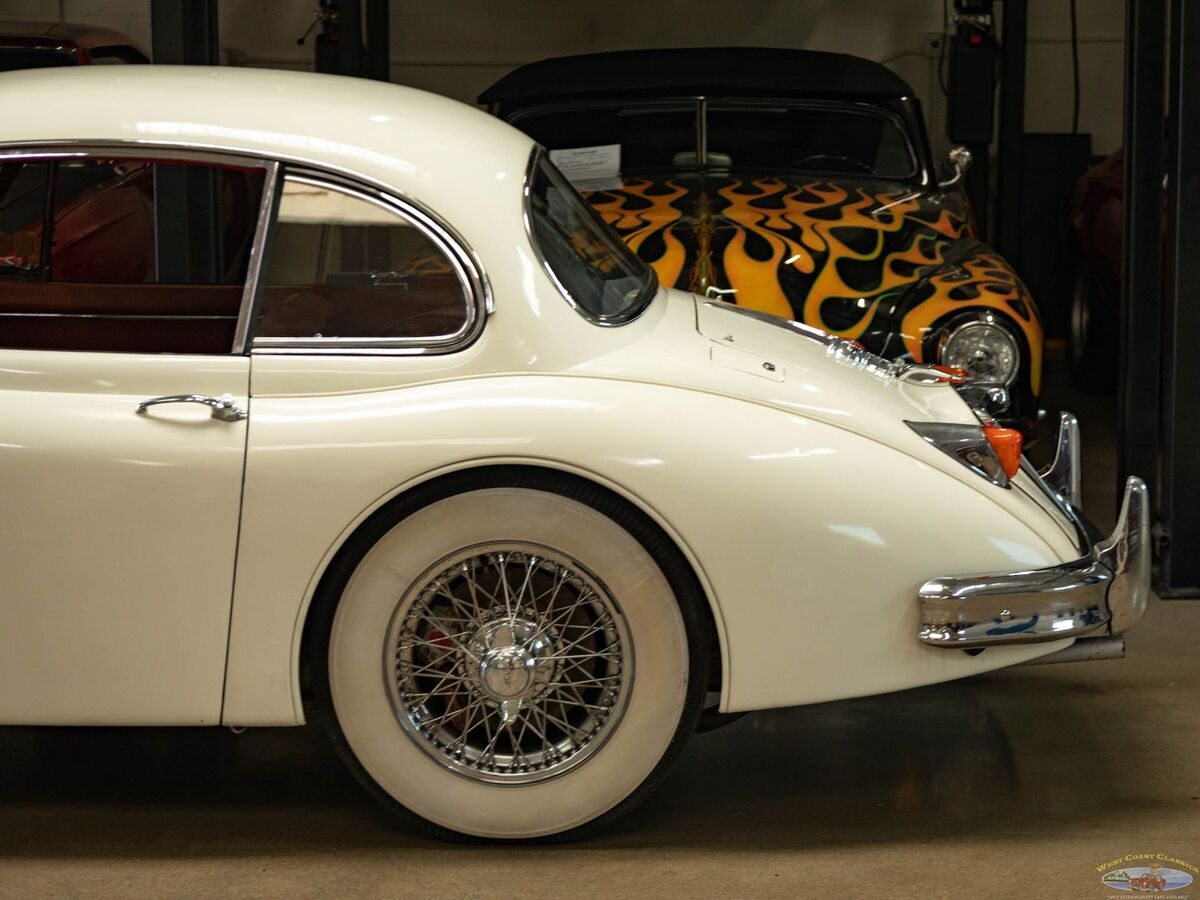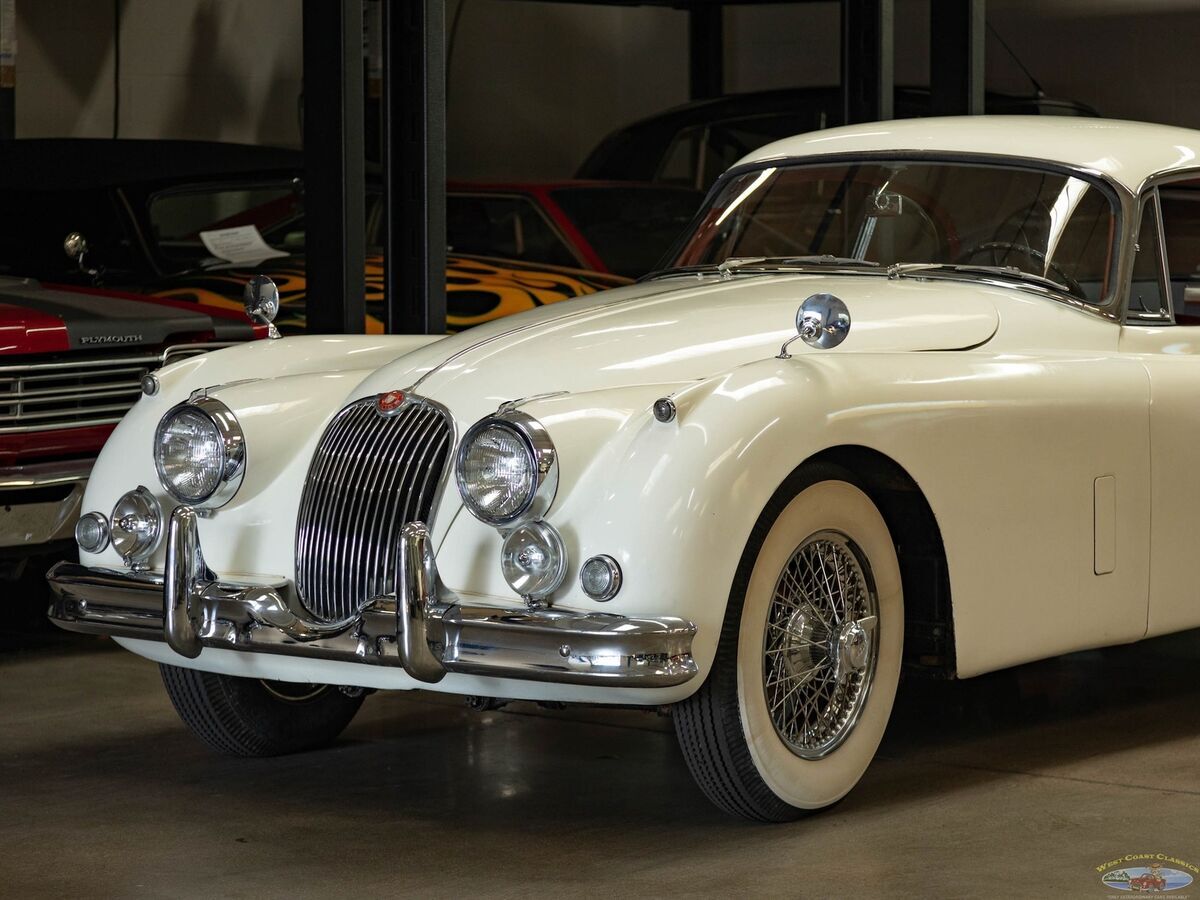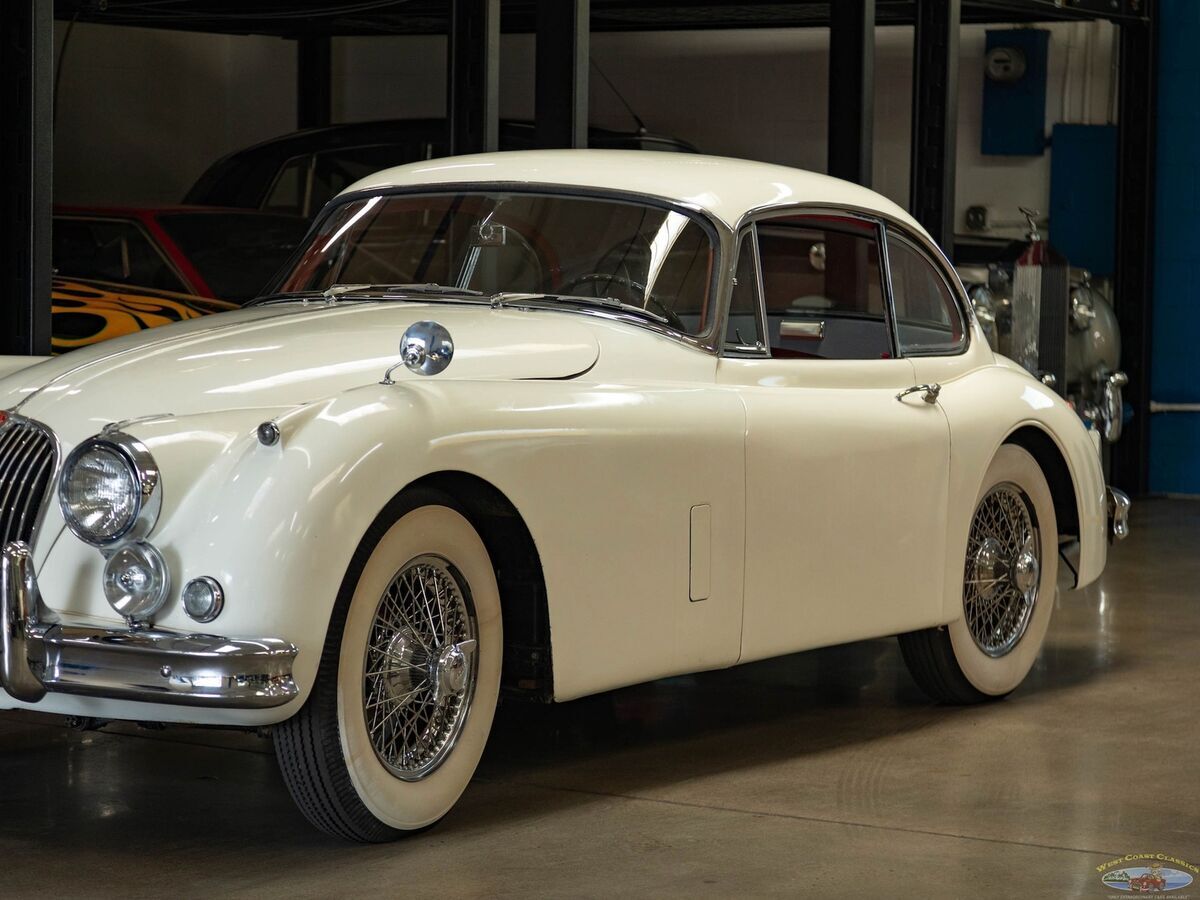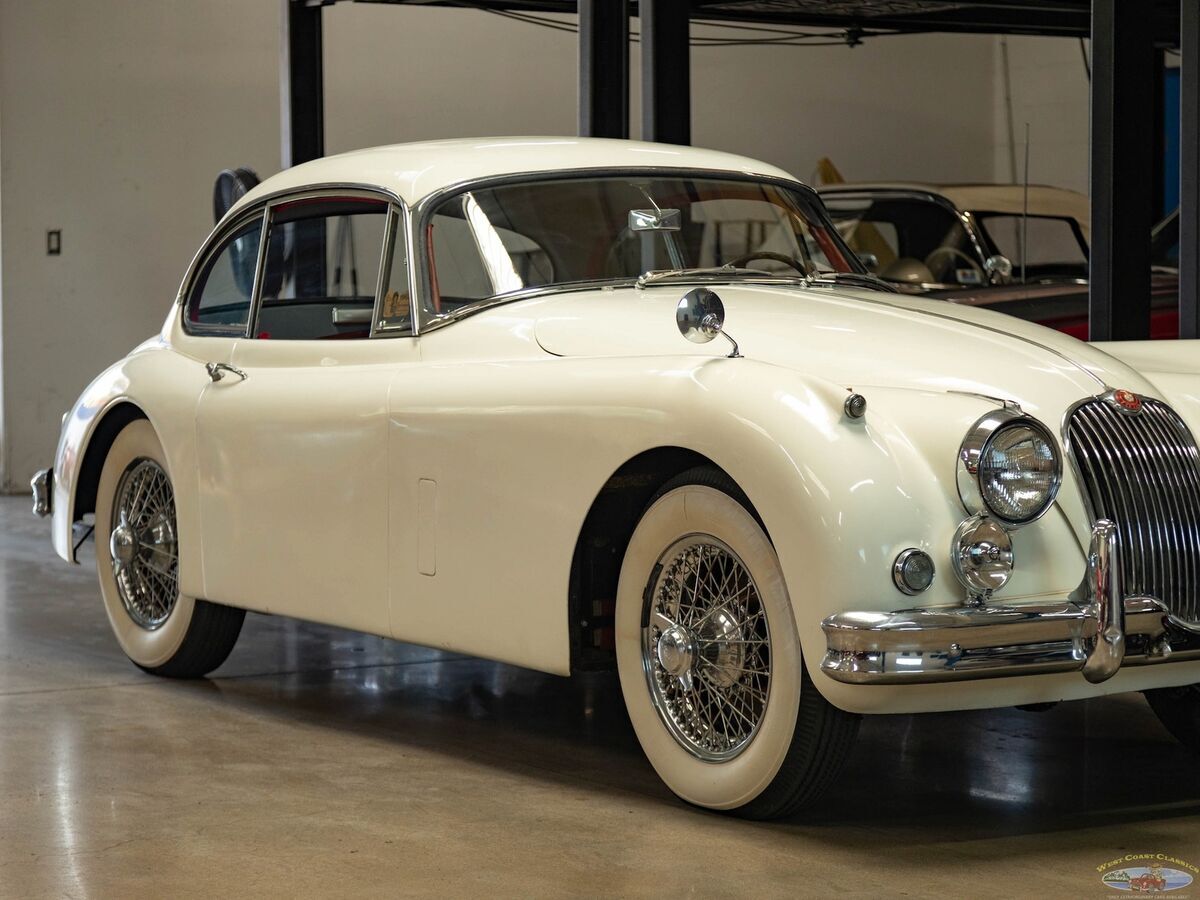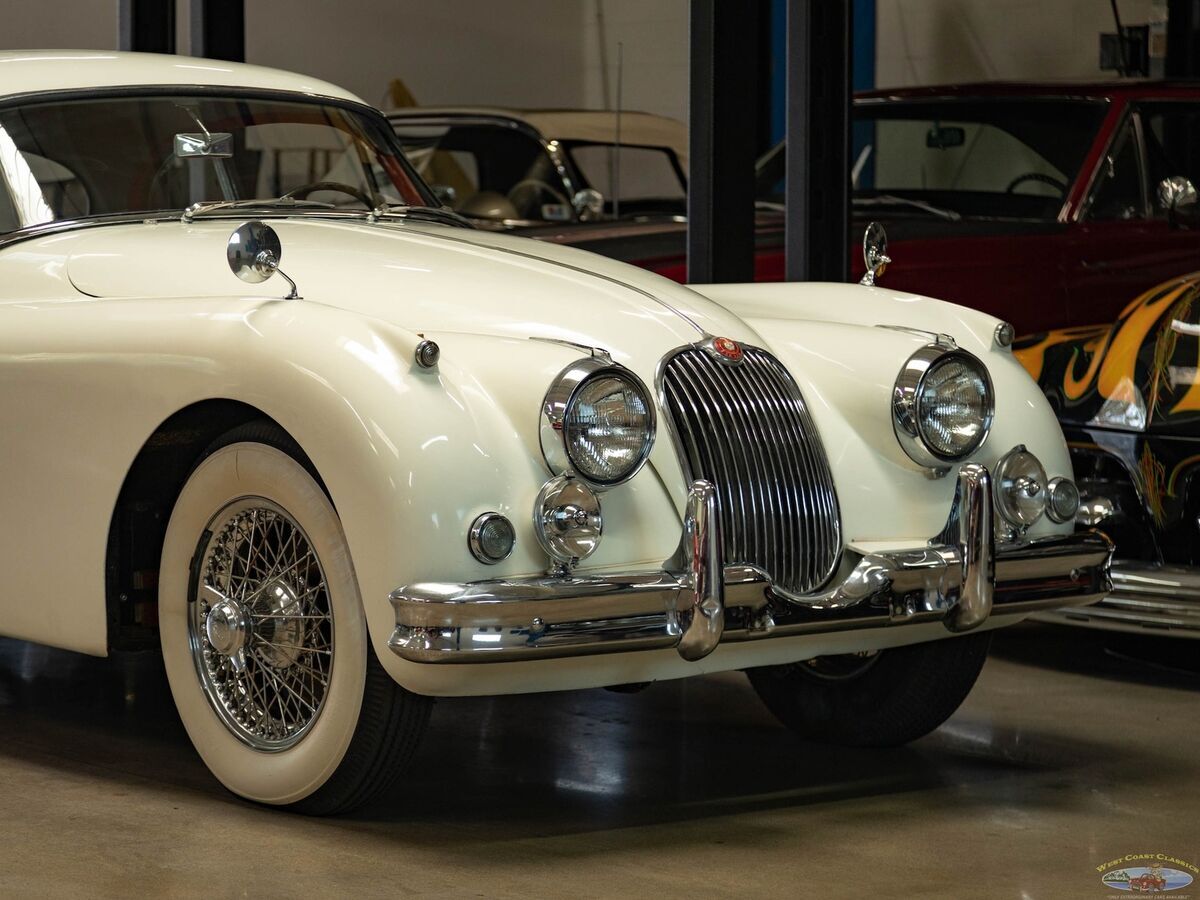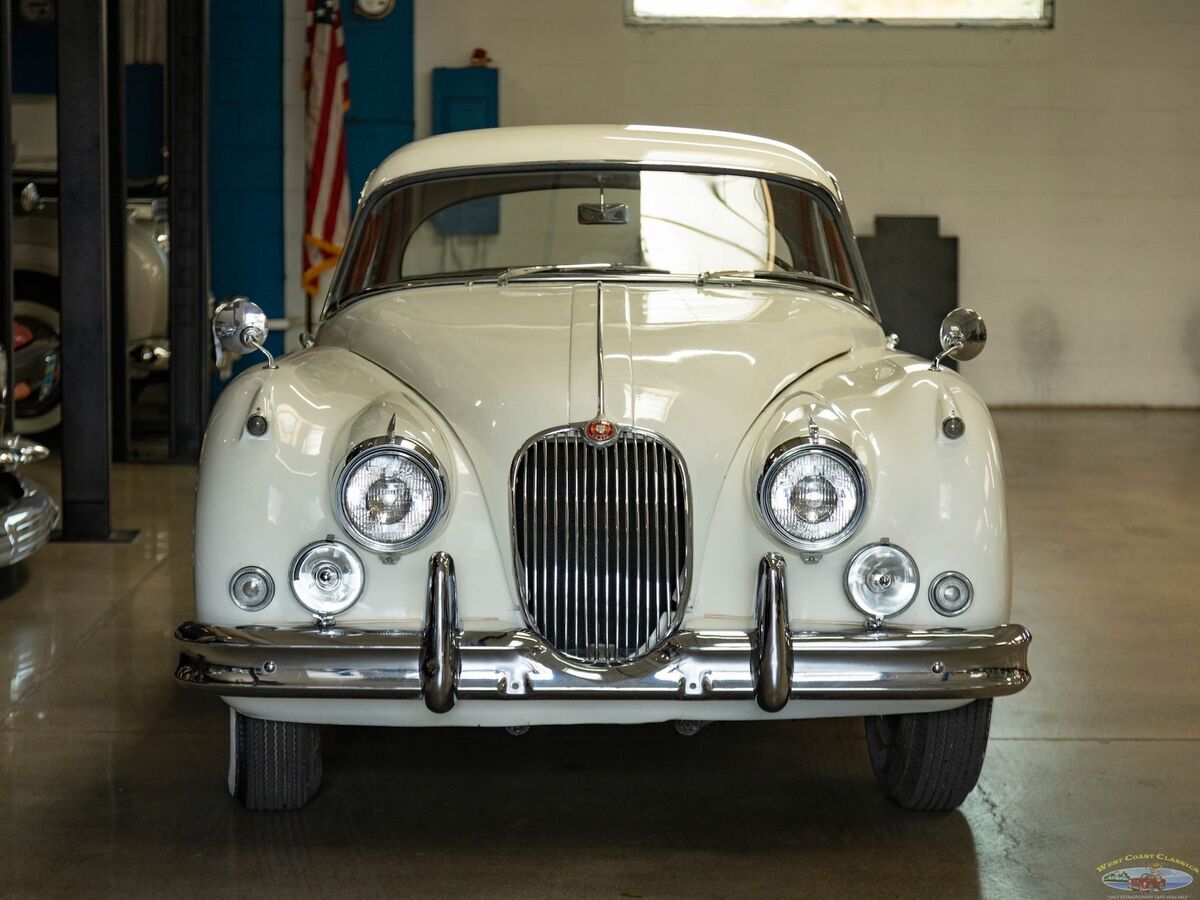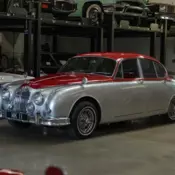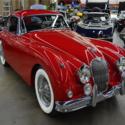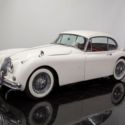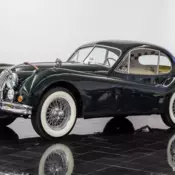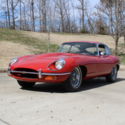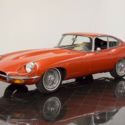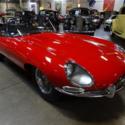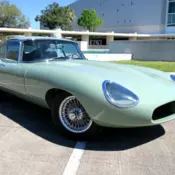14260 Miles 3442cc inline 6 cyl 4 spd with overdrive2 Door Coupe
| Make: | Jaguar |
| Model: | XK 150 |
| Type: | 2 Door Coupe |
| Trim: | 4 spd Fixed Head Coupe |
| Year: | 1959 |
| Mileage: | 14260 |
| VIN: | V32928 |
| Color: | White |
| Engine: | 3442cc inline 6 cyl |
| Fuel: | Gasoline |
| Transmission: | Manual |
| Drive type: | -- |
| Interior color: | Red |
| Vehicle Title: | -- |
1959 Jaguar XK 150 4 spd Fixed Head Coupe Additional Info:
1959 JAGUAR XK150 FIXED HEAD COUPE 4 SPD MANUAL 3442cc inline 6-cylinder engine4-speed manual transmissionBumper-mounted driving lightsFender-mounted mirrorsRed leather upholstery West Coast Classics are proud to present a very rare and mostly all original matching #'s example of this all stock and rust free coveted and highly desirable 1959 Jaguar XK 150 Fixed Head Coupe with Left Hand Drive U.S. delivery in 'Old English White' color paint with its original 3442cc 6 cylinder engine with dual SU HD6 carbs and which boasts its all original Red leather seats and chrome wire wheels.All matching numbers original 3.4L 6 cylinder engine and 4 speed manual transmission! We recently acquired the car with the car sporting an excellent body with no signs of any previous damage history and no rust, a true mostly all original survivor! The car boasts four chrome wire knock off wheels and its original matching numbers engine. This is a rare car; 1 of only 4,445 XK150 Fixed Head Coupes in total (1957-60). The car driving exactly as it should with a recent full service after being acquired from a prominent collection.3,442 CC DOHC Inline 6-Cylinder Engine Twin SU Carburetors4-Speed Manual Gearbox 4-Wheel Hydraulic Disc BrakesFront Independent Torsion-Bar SuspensionRear Live Axle with Semi-Elliptical Leaf Springs The XK 120 was produced by Jaguar between 1948-54 and caused an absolute sensation when launched and was immediately destined to become one of the most collectible cars of all time. Its name referred to its straight 6, 3442 cc 120 mph (193 km/h) top speed (faster with the windscreen removed!) engine which was insanely fast for its day and made the XK120 the world's fastest standard production car at the time of its launch and a very successful racer which spurred Jaguar onto breaking many world speed records. When the model debuted in 1948 at the Earls Court Motor Show in London, England it was the darling of the show and remains today as much of a show stopper as it did then, over 74 years later! The car set numerous and now legendary speed records and was the fastest production car in the world in it's day and Jaguar used its engine for decades to come. In terms of design, the two-seater roadster with its classically simple flowing lines, slender tail and exotic flush-sided body was a massive leap forward for sports car design at the time and in many ways its styling remains unparalleled. Combined with new standards in terms of performance, Jaguar had obviously built what was destined to become this milestone and eminently always collectible classic car. The attraction was obvious: Jaguar had created arguably the best-looking sports car on the market and, thanks to a powerful new straight six engine under the hood, the aerodynamically-styled machine would likely be the fastest production car in the world.In late 1954, the XK120 was replaced by the XK140 which ushered in a number of cosmetic and mechanical updates.By 1957, although the XK platform was nearing the end of its production life, there was still time for one final iteration: the XK150.The 150 was the most refined XK yet. The majority of updates focused on the exterior and interior. However, the addition of disc brakes was also a major advancement. Revealed in May 1957, the XK150 bore an obvious family resemblance to the XK120 and XK140, but was radically revised. Most visibly, a one-piece windscreen replaced the split screen, and the wing line carried higher and more streamlined at the doors. The widened bonnet opened down to the wings, and on the coupes the windscreen frame was moved forward 4 inches to make passenger access easier.The XK150 was launched in May 1957 and initially came in a choice of FHC and DHC body styles. An OTS Roadster joined the line up ten months later in March 1958. From October 1959, Jaguar also offered a larger 3.8-litre engine which, like the 3.4, came in several alternative states of tune.The XK150's dashboard came trimmed in leather, with walnut optional on all models. On the early drophead coups, the aluminum centre dash panel, which was discontinued after June 1958, had an X pattern engraving similar to the early 3.8 E-Type. Thinner doors gave more interior space. Suspension and chassis were very similar to the XK140, with manual-only rack and pinion steering available. The 3.4 litre 6 cylinder was similar to the XK140's, but a new "B" type cylinder head raised power to 180 SAE bhp at 575
1959 JAGUAR XK150 FIXED HEAD COUPE 4 SPD MANUAL 3442cc inline 6-cylinder engine4-speed manual transmissionBumper-mounted driving lightsFender-mounted mirrorsRed leather upholstery West Coast Classics are proud to present a very rare and mostly all original matching #'s example of this all stock and rust free coveted and highly desirable 1959 Jaguar XK 150 Fixed Head Coupe with Left Hand Drive U.S. delivery in 'Old English White' color paint with its original 3442cc 6 cylinder engine with dual SU HD6 carbs and which boasts its all original Red leather seats and chrome wire wheels.
All matching numbers original 3.4L 6 cylinder engine and 4 speed manual transmission! We recently acquired the car with the car sporting an excellent body with no signs of any previous damage history and no rust, a true mostly all original survivor! The car boasts four chrome wire knock off wheels and its original matching numbers engine. This is a rare car; 1 of only 4,445 XK150 Fixed Head Coupes in total (1957-60). The car driving exactly as it should with a recent full service after being acquired from a prominent collection.
3,442 CC DOHC Inline 6-Cylinder Engine
Twin SU Carburetors
4-Speed Manual Gearbox
4-Wheel Hydraulic Disc Brakes
Front Independent Torsion-Bar Suspension
Rear Live Axle with Semi-Elliptical Leaf Springs
The XK 120 was produced by Jaguar between 1948-54 and caused an absolute sensation when launched and was immediately destined to become one of the most collectible cars of all time. Its name referred to its straight 6, 3442 cc 120 mph (193 km/h) top speed (faster with the windscreen removed!) engine which was insanely fast for its day and made the XK120 the world's fastest standard production car at the time of its launch and a very successful racer which spurred Jaguar onto breaking many world speed records.
When the model debuted in 1948 at the Earls Court Motor Show in London, England it was the darling of the show and remains today as much of a show stopper as it did then, over 74 years later! The car set numerous and now legendary speed records and was the fastest production car in the world in it's day and Jaguar used its engine for decades to come. In terms of design, the two-seater roadster with its classically simple flowing lines, slender tail and exotic flush-sided body was a massive leap forward for sports car design at the time and in many ways its styling remains unparalleled. Combined with new standards in terms of performance, Jaguar had obviously built what was destined to become this milestone and eminently always collectible classic car.
The attraction was obvious: Jaguar had created arguably the best-looking sports car on the market and, thanks to a powerful new straight six engine under the hood, the aerodynamically-styled machine would likely be the fastest production car in the world.
In late 1954, the XK120 was replaced by the XK140 which ushered in a number of cosmetic and mechanical updates.
By 1957, although the XK platform was nearing the end of its production life, there was still time for one final iteration: the XK150.
The 150 was the most refined XK yet. The majority of updates focused on the exterior and interior. However, the addition of disc brakes was also a major advancement. Revealed in May 1957, the XK150 bore an obvious family resemblance to the XK120 and XK140, but was radically revised. Most visibly, a one-piece windscreen replaced the split screen, and the wing line carried higher and more streamlined at the doors. The widened bonnet opened down to the wings, and on the coupes the windscreen frame was moved forward 4 inches to make passenger access easier.
The XK150 was launched in May 1957 and initially came in a choice of FHC and DHC body styles. An OTS Roadster joined the line up ten months later in March 1958.
From October 1959, Jaguar also offered a larger 3.8-litre engine which, like the 3.4, came in several alternative states of tune.
The XK150's dashboard came trimmed in leather, with walnut optional on all models. On the early drophead coups, the aluminum centre dash panel, which was discontinued after June 1958, had an X pattern engraving similar to the early 3.8 E-Type. Thinner doors gave more interior space. Suspension and chassis were very similar to the XK140, with manual-only rack and pinion steering available.
The 3.4 litre 6 cylinder was similar to the XK140's, but a new "B" type cylinder head raised power to 180 SAE bhp at 575
